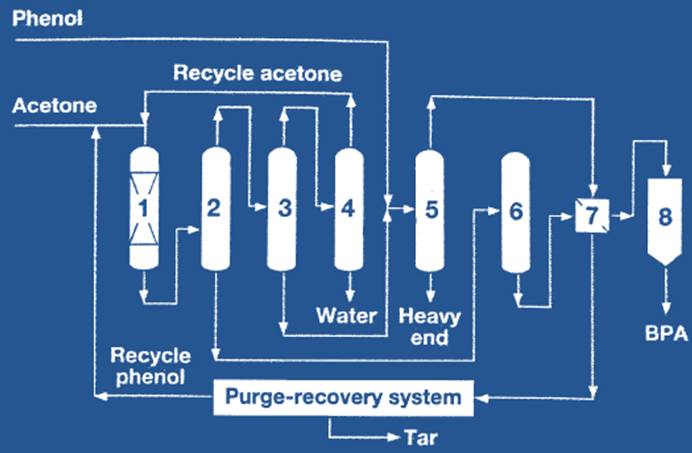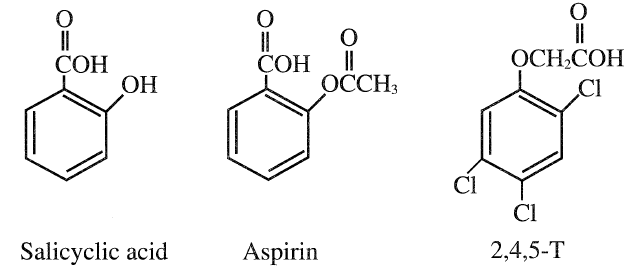
Properties and Uses of Phenol
 المؤلف:
sami matar & Lewis. F. Hatch
المؤلف:
sami matar & Lewis. F. Hatch
 المصدر:
Chemistry of PETROCHEMICAL PROCESSES
المصدر:
Chemistry of PETROCHEMICAL PROCESSES
 الجزء والصفحة:
p 273
الجزء والصفحة:
p 273
 10-9-2017
10-9-2017
 1718
1718
Properties and Uses of Phenol
Phenol, a white crystalline mass with a distinctive odor, becomes reddish when subjected to light. It is highly soluble in water, and the solution is weakly acidic. Phenol was the 33rd highest-volume chemical. The 1994 U.S. production of phenol was approximately 4 billion pounds. The current world capacity is approximately 15 billion pounds. Many chemicals and polymers derive from phenol. Approximately 50% of production goes to phenolic resins. Phenol and acetone produce bis-phenol A, an important monomer for epoxy resins and polycarbonates. It is produced by condensing acetone and phenol in the presence of HCI, or by using a cation exchange resin. Figure 1.1 shows the Chiyoda Corp. bisphenol A process.


Figure 1.1. The CT-BISA (Chiyoda Corp.) process for producing bis phenol A from acetone and phenol. (1) reactor, (2–4) distillation columns, (5) phenol distillation column, (6) crystallizer, (7) solid/liquid separator, (8) prilling tower.
Important chemicals derived from phenol are salicylic acid; acetylsalicyclic acid (aspirin); 2,4-dichlorophenoxy acetic acid (2,4-D), and 2,4,5- triphenoxy acetic acid (2,4,5-T), which are selective herbicides; and pentachlorophenol, a wood preservative:

Other halophenols are miticides, bactericides, and leather preservatives. Halophenols account for about 5% of phenol uses. About 12% of phenol demand is used to produce caprolactam, a monomer for nylon 6. The main source for caprolactam, however, is toluene. Phenol can be alkylated to alkylphenols. These compounds are widely used as nonionic surfactants, antioxidants, and monomers in resin polymer applications:

Phenol is also a precursor for aniline. The major process for aniline (C6H5NH2) is the hydrogenation of nitrobenzene (see “Nitration of Benzene”).
 الاكثر قراءة في البترو كيمياويات
الاكثر قراءة في البترو كيمياويات
 اخر الاخبار
اخر الاخبار
اخبار العتبة العباسية المقدسة


